Subscribe to join thousands of other ecommerce experts

Data-driven pricing is arguably the most critical aspect in online retail and crucial for the implementation of overall business strategies. Attractive prices directly influence conversion rates and thus drive revenue growth and customer acquisition, but overly aggressive discounting is detrimental to long-term profitability. Despite the delicacy of this challenge, few retailers follow a structured, transparent, and repeatable approach when it comes to setting product prices: Too often, merchants use antiquated methods, take hardly any data into account, update prices irregularly or not at all.
Only by empowering business-focused pricing strategies with data, automation and human intuition retailers stand a chance to cope with ever increasing competitive pressure.
In this first post of more yet to come, we’ll give you an overview of the basics of data-driven pricing and showcase a few prominent strategies that you can mix and match to suit your particular needs:
- What’s data-driven pricing all about?
- Pros and cons of cost-based pricing
- Pros and cons of competition-based pricing
- Pros and cons of availability-based pricing strategies
- Pros and cons of demand-based pricing
- All you need to know about elasticity-based pricing
Table of Contents
What’s data-driven pricing all about?
Before we dive into pricing, take a moment and reflect on what actually differentiates your online store from the competition: Early access to new merchandise? Logistics and distribution? Superior expertise and level of service? Depending on what your competitive advantage comes down to, the right approach to pricing can vary a lot.
But whatever strategies suit your particular business best, they won’t succeed unless they’re fueled with the appropriate internal and external data. Let’s look at a couple of different data-driven pricing strategies, when to apply them, their pros and cons, as well as what requirements they have.
Pros and cons of cost-based pricing
Pricing your products based on what you pay to acquire them may sound simple and straightforward. However, the devil is in the details: On top of the wholesale price, there’s a plethora of factors you need to take into account as well, such as shipping and warehousing: Beyond that, variable costs (e.g. insurance, operations, marketing) come into play.
Beyond that, it’s also important to note that some factors (e.g. returns, warranty claims) simply can’t be put in numbers right away. To accurately account for those in your data-driven pricing, you need strong intuition and access to historical data of comparable merchandise and the ability to forecast the future.
After determining the relevant cost factors for your products, you need to consider how much margin you reasonably can add on top in order to accrue the desired profit. Depending on the vertical you operate in and the type of inventory you sell, these margins can vary a lot.
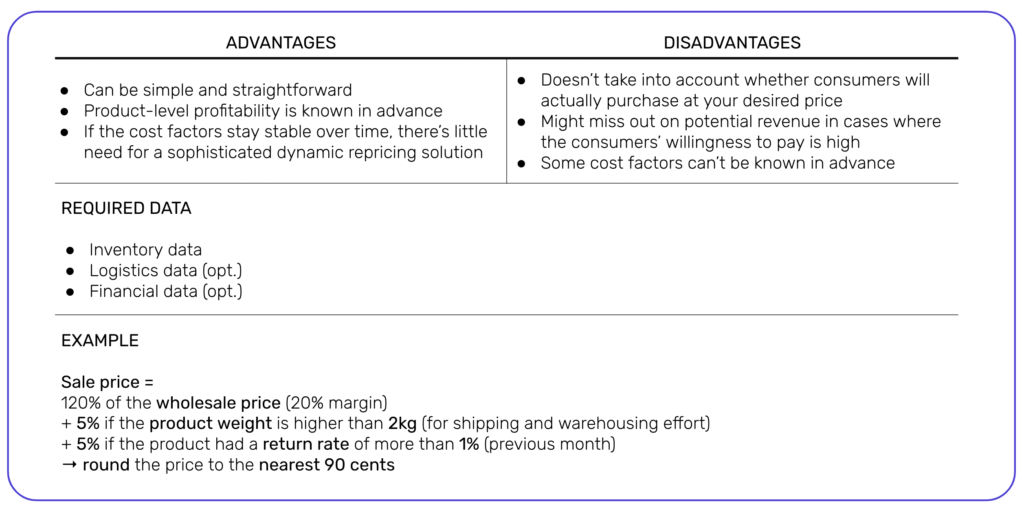
Pros and cons of competition-based pricing
Offering some of your products at an aggressive price point compared to your competitors can make sense for more than one reason:
- If you’re already the cost leader you can relay some of that advantage to your customers, thus undercutting the competition without harming your margins.
- You may choose to selectively relinquish profit on particular products if they’re the right ones. Order-openers are a great choice to start: they drive new customers to your shop, and if priced attractively can make up for the low margins.
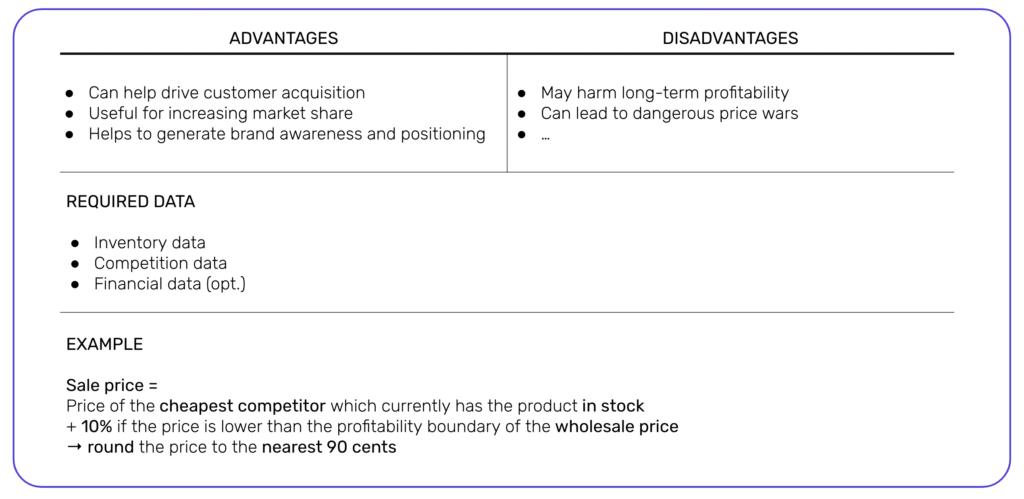
Pros and cons of availability-based pricing strategies
For products that have consistently high demand but an unstable supply chain, you can choose to align your price point with availability. Simply put, if your warehouse is full, you’d want to charge a lower price than if you’re close to running out. Note: A more sophisticated version of this is elasticity-based pricing, which we’ll discuss below.
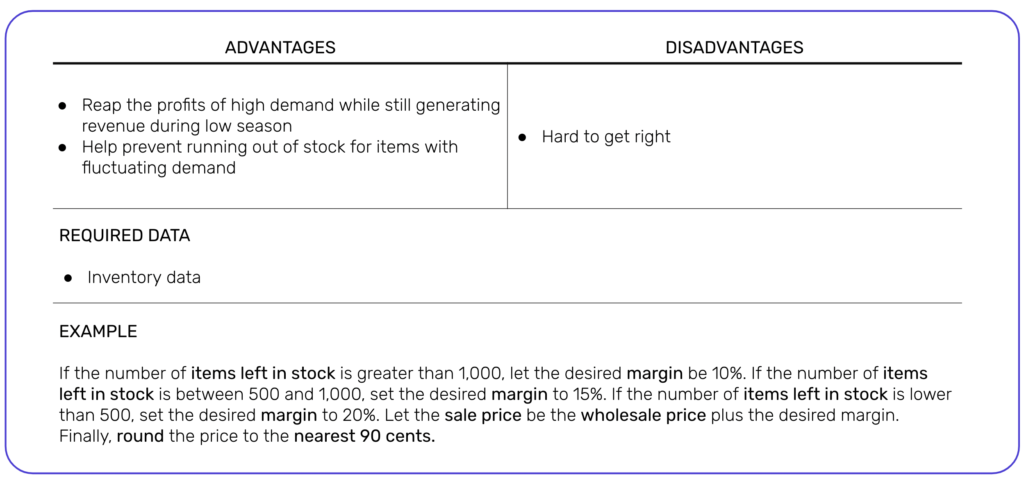
Pros and cons of demand-based pricing
Availability-based pricing is great, but the items you have left in stock are in fact only a proxy measure for the underlying information: How much of your product do customers actually buy? By enriching the aforementioned strategy with data points such as the number of items sold in a previous period (say, one week), you can create a powerful strategy that respects fluctuations in customer demand. Thereby, you can get rid of slow moving items almost automatically.
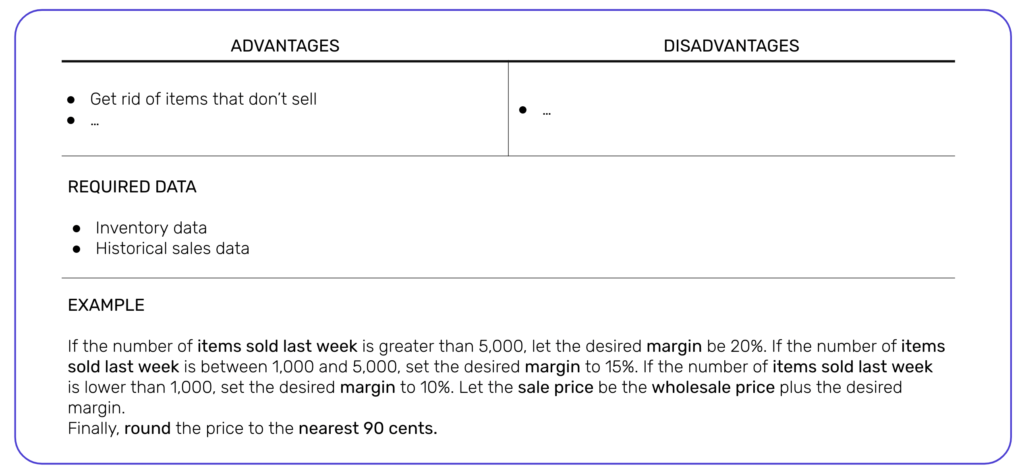
Elasticity-based pricing and is it the holy grail of data-driven pricing?
Price elasticity is considered the holy grail of pricing by many economists. The underlying question is: How much does the price point influence whether or not customers will buy your product?
Perfectly elastic demand means that the more you lower prices the more items you’ll sell, and vice versa. Non-essential luxury goods often exhibit that characteristic (e.g. sports cars – the cheaper they get, the more people will choose to buy one).
Perfectly inelastic demand on the other hand means that regardless of what you do with pricing, consumers will always purchase more or less the same quantity of products (e.g. essential consumer goods, such as bread).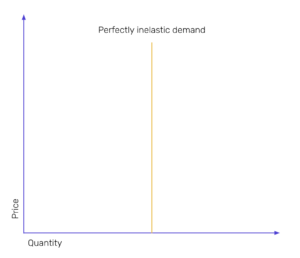
Of course, no product is perfectly elastic or perfectly inelastic, as other factors influence demand as well. Having a basic understanding of where your products fall on the elasticity range however can be very insightful.
Take a moment to reflect back at our example of demand-based pricing: Can you see how we actually made an unstated assumption there? We pretended that lower prices will yield higher demand and vice versa. But can we be so sure of that?
In order to see whether or not that assumption was justified, we’d have to run a couple of experiments in the real world. In a simplified setup, we could choose to sell the product at a 20% profit margin for two weeks and record how many items we sold, then we’d increase the margin to 22% for another two weeks, or lower it to 18%, and compare the resulting demand curves. With enough data, we can then say with confidence whether or not price is a relevant factor for the demand of that item, and pick an appropriate pricing strategy.
Conclusion
Data-driven pricing is a necessity in modern ecommerce. However, getting it right is challenging on many levels. Not only do retailers need to deliberately pick and choose an appropriate data-driven pricing strategy for various cohorts of products in vast assortments, but also need to ensure that they have access to the requisite data in order to make the strategy work. Furthermore, the capability to immediately update prices whenever the underlying data changes is a must-have for many strategies as well.
If you’re looing for a solution, smec’s Dynamic Price Automation technology helps you with all of that: From data enablement and integration, identifying and implementing the right strategies, to end-to-end integration in your IT landscape, smec is your online retail growth partner for all your pricing challenges. And if you want to expand your knowledge about pricing in ecommerce read how pricing influences conversion rates (an extensive case study).

